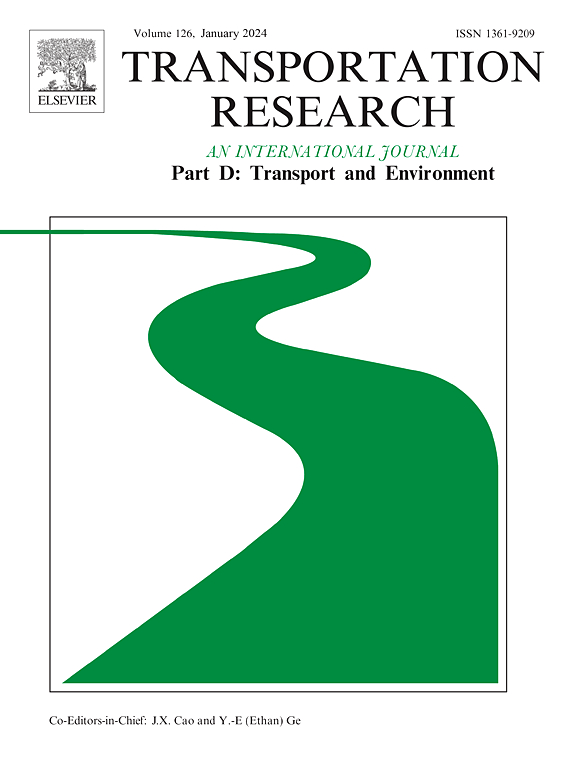老年人的旅行体验:感知和客观建成环境的作用
IF 7.7
1区 工程技术
Q1 ENVIRONMENTAL STUDIES
Transportation Research Part D-transport and Environment
Pub Date : 2025-10-06
DOI:10.1016/j.trd.2025.105024
引用次数: 0
摘要
随着老年人比例的增加,了解建筑环境如何影响他们的出行行为对于创造老年人友好型环境至关重要。研究表明,将感知和客观测量相结合可以提供更准确的评估,但它们之间的关系——尤其是在行走之外——仍未得到充分探索。本研究利用来自比利时根特1115名参与者的调查数据解决了这一差距。相关分析显示,感知与客观测量之间存在一致性(例如,自行车基础设施的存在与老年人的可骑行性感知呈正相关)。然而,一些弱关联表明,建筑环境感知可能受到其他因素的影响。多项logit模型显示,感知环境和客观环境都会影响出行方式的选择,其中骑行基础设施和停车条件起主要作用。感知特征对某些模式的影响更大,客观特征对另一些模式的影响更大。因此,规划老年人友好型城市需要综合可感知和客观的措施,同时支持社会包容和可持续的高质量出行选择。本文章由计算机程序翻译,如有差异,请以英文原文为准。
Older adults’ travel experiences: Role of the perceived and objective built environment
As the share of older adults increases, understanding how the built environment influences their travel behaviour is crucial for creating age-friendly environments. Research suggests that combining perceived and objective measures provides a more accurate assessment, yet their relationship—especially beyond walking—remains underexplored. This study addresses this gap using survey data from 1115 participants in Ghent, Belgium. Correlation analyses show alignment between perceptions and objective measures (e.g., the presence of cycling infrastructure is positively associated with older adults’ cyclability perceptions). However, some weak associations suggest that built environment perceptions may be influenced by additional factors. Multinomial logit models reveal that both perceived and objective environments influence travel mode choice, with cycling infrastructure and parking conditions playing major roles. Perceived features are more influential for some modes, objective features for others. Therefore, planning age-friendly cities requires integrating perceived and objective measures, while supporting social inclusion and sustainable, high-quality travel options.
求助全文
通过发布文献求助,成功后即可免费获取论文全文。
去求助
来源期刊
CiteScore
14.40
自引率
9.20%
发文量
314
审稿时长
39 days
期刊介绍:
Transportation Research Part D: Transport and Environment focuses on original research exploring the environmental impacts of transportation, policy responses to these impacts, and their implications for transportation system design, planning, and management. The journal comprehensively covers the interaction between transportation and the environment, ranging from local effects on specific geographical areas to global implications such as natural resource depletion and atmospheric pollution.
We welcome research papers across all transportation modes, including maritime, air, and land transportation, assessing their environmental impacts broadly. Papers addressing both mobile aspects and transportation infrastructure are considered. The journal prioritizes empirical findings and policy responses of regulatory, planning, technical, or fiscal nature. Articles are policy-driven, accessible, and applicable to readers from diverse disciplines, emphasizing relevance and practicality. We encourage interdisciplinary submissions and welcome contributions from economically developing and advanced countries alike, reflecting our international orientation.

 求助内容:
求助内容: 应助结果提醒方式:
应助结果提醒方式:


